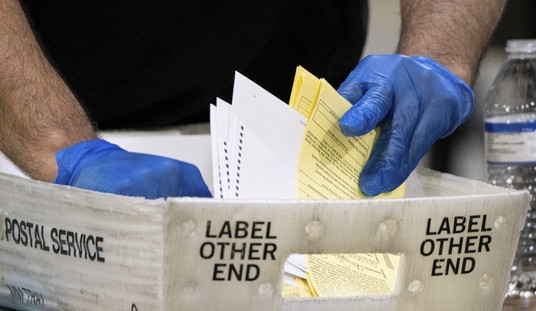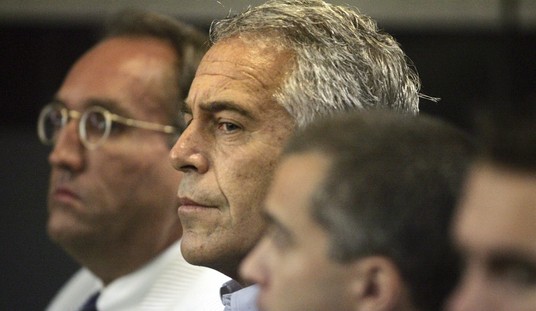The University of Wisconsin Madison has received nearly $5 million from the federal government to create a “science fiction” project modeling environmental scenarios for the Yahara Watershed in Wisconsin. The project assumes that climate change will create a serious crisis for the watershed, which includes the City of Madison and surrounding suburbs, and in four scenarios researchers game out what could happen by the year 2070.
Using a grant from the National Science Foundation, a federal government entity, UW experts and scientists have created a multimedia presentation that combines social theories, imagined scenarios, and predictions of future scientific data to contemplate the effects of climate change on central Wisconsin and the Midwest.
News of the Yahara 2070 project was reported earlier this week by the Free Beacon. The University of Wisconsin-housed Wisconsin Center for Investigative Journalism, a left-leaning outfit, conveniently promoted and explained the project in a story published by the Appleton Post-Crescent.
In that piece, Chris Kucharik, the leader of the Yahara 2070 project, explained that the aim of the effort was to produce “science fiction.” Another researcher, Steve Carpenter, praised the scenarios for being “the edge of plausibility.”
To produce this “science fiction” from “the edge of plausibility,” taxpayers are on the hook for precisely $4,911,961.00 according to a grant award listed on the NSF.gov website.
While each scenario assumes an eventual solution to a climate change crisis, all of them involve either the total destruction of society as it currently is, or a massive uptick in governmental regulation of life.
The “Abandonment and Renewal” scenario is perhaps the most doomsday prediction of them all. It predicts that in 2035 a hypothetical species of algae will bloom in the lakes of the Yahara Watershed, particularly lakes Mendota and Monona. This algae will emit toxic fumes that will kill thousands of people who, as a group, refused to take action earlier to prevent a climate catastrophe.
“Buildup of nutrient pollution in the lakes enables the emergence of a new species of cyanobacteria, also known as blue-green algae, which emits a toxic fume. In the summer of 2035, a massive bloom of the cyanobacteria erupts in the lakes. Its fumes kill thousands of people and force thousands more to evacuate the area forever.”
But never fear, eventually resourceful humans will retreat to the area, according to UW researchers, from the federally created “Great Lakes Climate Change Refuge” to begin a new life. That life will involve encountering, among other things, herds of elephants roaming the area around Madison.
Although epic, the disaster purged the land of “industrial agriculture” and exchanged it for “rejuvenating ecosystems” that “offered these idealistic homesteaders a virtually clean slate from which to realize their vision.”

In another scenario, a rising “youth culture” in the 2020s begins to save the world from the “edge of environmental and political collapse.” The setting games out what would happen if hypothetical “Climate-related disasters overwhelm the United States, and political gridlock prevents meaningful measures to mitigate and adapt to the changes occurring.”
To prevent eminent climate catastrophe, this “youth culture” leads a “Great Transition.” In the City of Monona, Wisconsin, that transition looked like this:
“Monona had passed citywide legislation to restore natural shorelines around the lake to reduce urban runoff and the risk of flooding, as well as to create more wildlife habitat. In recognizing their connection with wildlife, residents understood that harmonious cohabitation meant being sensitive to each other’s needs and, sometimes, giving each other space.”
The 20-page sketch of this scenario includes gloomy recitations of an America that is on the verge of collapse. It also contains a healthy dose of leftwing environmentalist ideology, with a hypothetical grandmother in 2070 telling her granddaughter:
“For example, you’ve learned in school that the United States Constitution grants explicit rights to nature. The government also pays farmers to help them grow their food organically. These things came from my generation’s prioritization of nature and collective well-being. We believed true happiness came from connection and meaning, and our prosperity relied on our success at nurturing these things.”
Throughout the entire Yahara 2070 project, themes of government control, forced mandates, destruction of industry, and collectivism are presented as panaceas for climate change problems. Current policy problems, like publicly underwritten rail projects, and debates over tax policy, are fully resolved in the UW-conceived utopia of Wisconsin in 2070.
“With the increased sense of responsibility toward one’s community and the dedication to improving life quality, most people in Yahara view taxes as a way of supporting each other and strengthening their communities.”
A third scenario tries to model what happens when Congress – in the future – passes the “Water Security Act of 2040” because “Water security has become an issue of national security.” The illustrated story accompanying the predicted scientific data replaces the popular phrase “One Nation Under God” with “One Nation under Water.” States are superseded in authority by newly developed “watershed governance units” and the various government fixes are compared to the liberal grandeur of Franklin Roosevelt’s New Deal programs of the 1930s.
Yahara 2070’s final scenario assumes that technological achievements alone will overcome looming climate problems. Public private partnerships with healthy doses of government funding manage to provide endless solutions to any and all environmental problems. Egotistically, the video that accompanies this scenario praises the University of Wisconsin of 2070 for coming up with so many “really bright ideas.”
The downside to the scenario is that cattle farms are mostly done away with, since livestock become responsible for producing one third of all greenhouse gasses in the world.
While the Yahara 2070 project doesn’t appear to offer specific policy ideas, the agenda driving it is of a decidedly left-leaning slant. Funded by federal taxpayer dollars, it seems to have turned into a veritable laboratory for discussing and theorizing about radical changes in society, industry, agriculture, education and government.
The federal grant underwriting the utopian day-dreaming is scheduled to be open until March of 2016. A total of 5 UW personnel are listed as investigators for the project by the NSF, and the UW website lists at least 20 current team members.
A variation of this piece was originally posted at MediaTrackers.org/Wisconsin.













Join the conversation as a VIP Member